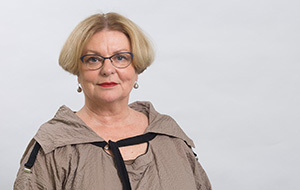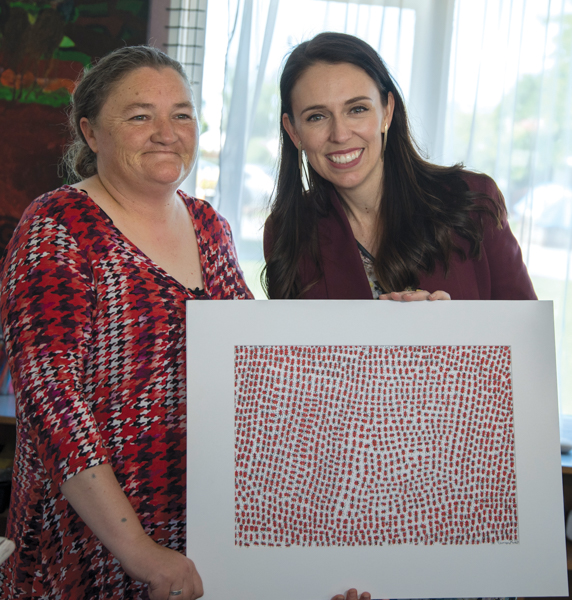The Government needs to put its money where its mouth is, says Diana McPherson, Director of Māpura Studios in Auckland. “If Creative New Zealand doesn’t have the capacity to fund creative spaces, then other government sources need to step up and recognise the benefits of the arts for everyone, in particular for people already disadvantaged and facing barriers to participation.”
 There are more than 70 creative spaces in towns and cities throughout New Zealand. These community art spaces have untapped potential to deliver a range of health and social benefits to people in Aotearoa’s vulnerable communities. People who seek community connection and wellbeing; recovery from addictions and mental ill health; and reintegration pathways from a Corrections facility.
There are more than 70 creative spaces in towns and cities throughout New Zealand. These community art spaces have untapped potential to deliver a range of health and social benefits to people in Aotearoa’s vulnerable communities. People who seek community connection and wellbeing; recovery from addictions and mental ill health; and reintegration pathways from a Corrections facility.
As Creative New Zealand Chair Michael Moynahan wrote in a 2019 blog: “Arts and creativity are our nation’s greatest taonga, not only because they’re beautiful or because they contain our culture and history, but also because they improve the lives of our people. We are healthier and happier because of those things. Our communities are also more connected, prosperous and safer because of the arts.”
The contribution of creative spaces to people’s health and wellbeing was demonstrated in the 2019 report Understanding the Value of Creative Spaces, resulting from research requested by Minister Carmel Sepuloni and conducted by the Ministry for Culture and Heritage.
The one factor preventing most of these creative spaces from achieving their potential is inconsistent and inadequate funding, the report states.
Māpura Studios and Ōtautahi Creative Spaces in Christchurch – both leading, innovative creative spaces – were declined project funding through Creative New Zealand’s COVID-19 Emergency Response Package Arts Continuity Grant. The projects involved the use of digital technology to reach even more people with their art programmes.
Ōtautahi Creative Spaces works with people who experience mental distress while Māpura Studios supports people with intellectual disabilities, people with neurological conditions including stroke, and prisoners.
"Tsunami of mental distress"
“There’s extensive evidence on the benefits of the arts to our health and wellbeing,” Kim says. “The tsunami of mental distress that’s anticipated following the pandemic makes understanding and acting on this more important than ever.
 “Creative New Zealand’s funding criteria should explicitly include organisations and projects achieving health outcomes through arts and creativity,” Kim says. “The funding framework should include the possibility of annual funding for creative spaces: project funding is helpful but does not meet the costs to sustain our organisations’ core work.”
“Creative New Zealand’s funding criteria should explicitly include organisations and projects achieving health outcomes through arts and creativity,” Kim says. “The funding framework should include the possibility of annual funding for creative spaces: project funding is helpful but does not meet the costs to sustain our organisations’ core work.”
Diana McPherson says that during the lockdown, Māpura Studios conducted classes via Zoom encompassing visual art, cartooning, dance, poetry and music.
“We realised we had the experience, knowledge, expert tutors and now the technology to extend the possibilities of creative engagement and learning to a far wider audience of people who might be disabled or disadvantaged in some way and unable to physically attend creative programmes.
“Our application to Creative New Zealand sought funding to help us research this idea, and create some pilot programmes that we would deliver to a group of vulnerable people to enhance their lives with creativity and engage with others through the miracles of modern technology.
“Māpura Studios has no government, council or any other core funding stream. We have to raise funds through grants, fundraising and by charging fees to our participants. We have never been able to tick the boxes set by Creative New Zealand to help us deliver arts programmes to our extensive community of around 200 disabled artists.
“For the first time, we felt there was some hope of getting some recognition and funding assistance through its Emergency Response Package. In the end, that was not the case and it was with a feeling of déjà vu that we received the declined notification.”
Questioning funding to creative spaces
Arts Access Aotearoa asked Creative New Zealand to comment on why creative spaces are not getting funding through its Emergency Response Package.
 Cath Cardiff, Senior Manager, Arts Development Services at Creative New Zealand, says Creative New Zealand values the opportunities that creative spaces provide and the contribution they make to supporting people who experience barriers to participation.
Cath Cardiff, Senior Manager, Arts Development Services at Creative New Zealand, says Creative New Zealand values the opportunities that creative spaces provide and the contribution they make to supporting people who experience barriers to participation.
“Even with the $25 million one-off funding boost for the 2020/21 year we will not be able to satisfy all requests for support, so we’re looking at how to best manage demand – while also improving the experience for applicants – by reviewing our processes.”
Cath says Creative New Zealand received an “unprecedented number of applications” for project funding through its COVID-19 Emergency Response Package Arts Continuity Grant.
“We have further funding, just announced, and hope to work further with individual creative spaces to help them understand the different elements that are considered by our external assessors when they review each application. For example, the ability of the project to deliver to the funding programme’s purpose and the viability of each project.
“We’re working closely with Arts Access Aotearoa staff to provide tautoko and advice for creative spaces’ future applications.”
Arts Access Aotearoa wants to provide advice
Richard Benge, Executive Director, Arts Access Aotearoa, says Arts Access Aotearoa would like to be included and provide advice to Creative New Zealand for future creative space applications.
 “We believe creative spaces should receive funding because they provide innovative arts practice and extend the reach of inclusion in the arts to marginalised communities.”
“We believe creative spaces should receive funding because they provide innovative arts practice and extend the reach of inclusion in the arts to marginalised communities.”
In a 2019 blog on The Spinoff, Prime Minister Jacinda Ardern wrote: “We’re looking at how we can better meet the needs of diverse communities and help people who experience barriers to participation get involved. Because the arts are for all – and we need to make sure this is reflected in our arts and cultural organisations.”
“The arts are for all … These five words encapsulate what creative spaces provide,” Richard says. “In the post Covid-19 recovery period, the number of people needing and seeking the services of creative spaces for mental health, wellbeing and a sense of community connection is expected to rise greatly.
“If Creative New Zealand doesn’t have the capacity to fund creative spaces, Arts Access Aotearoa believes they should be able to apply for and receive core funding from another agency such as the Ministry of Social Development, Ministry of Health or the Ministry for Culture and Heritage.
“Core funding would provide sustainability, and encourage growth and innovation in the creative spaces sector. Importantly, vulnerable people in regions and urban centres would be able to access the arts in their community. This would nurture their wellbeing, mental health and self-esteem, providing a sense of belonging in these difficult times.
“The creative spaces sector is ready for investment. It’s an obvious, effective way to reduce the number of people facing acute mental health crises and enhance the creativity, health and wellbeing of people in Aotearoa New Zealand.”


